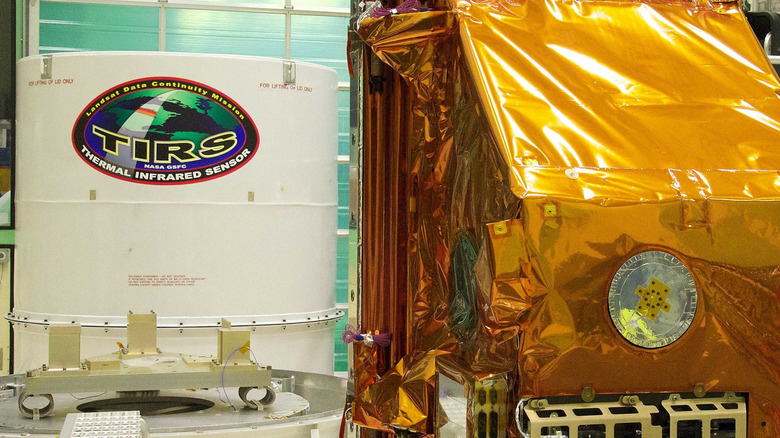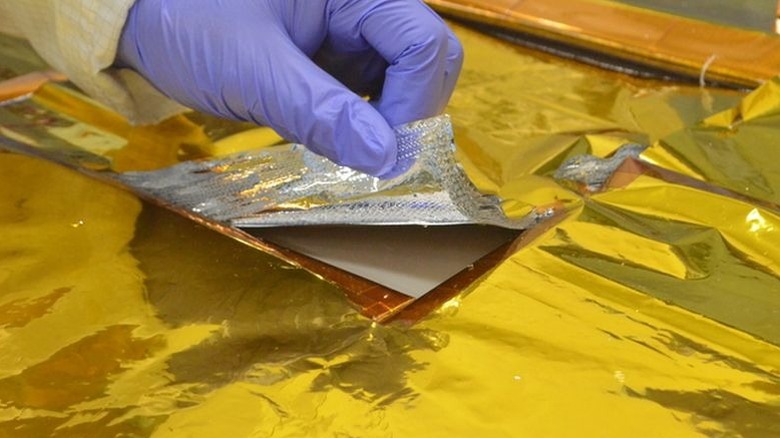Why Are Satellites Covered In 'Gold Foil'? Here's What It's For
NASA has had a long connection with gold and its unique color. In 1996, the Mars Global Surveyor was launched into space carrying a gold-plated telescope mirror designed to map the topography of Mars. In 1977, NASA sent golden records (complete with cartridges and needles to play them) aboard Voyager 1 and 2 — in case something out there ever found them. On July 20, 1969, the Apollo 11 Lunar Module named the "Eagle" — wrapped in what looked like gold foil — became the first crewed vehicle to land on the Moon.
So it's ironic that the "gold foil" isn't real gold at all but rather something called Multi-Layer Insulation (MLI). Oh, and it's not even foil. The MLI is used as both a thermal blanket to reduce heat loss, but also acts as a protective barrier against dust and bits of space debris. These blankets have three components: the outboard layer, the inner layers (which can vary depending on the orbit and mission requirements), and the inboard layer.
The thin sheets are made of gold and silver-colored aluminized polyimide or polyester films (i.e., DACRON, Nomex netting, and Mylar) coated with layers of aluminum. The silver aluminum side faces inward towards the craft, while the yellowish-gold side faces outward, making the space equipment appear draped in gold. The inner layers can be separated by netting with low-conductive properties, which helps separate and reduce contact between each layer. The crinkled appearance is intentional, providing a weight-saving alternative to netting while also reducing contact between the layers.
Whether it's fool's gold or the real stuff, space still likes the shine
With a temperature of -454.75 Fahrenheit, space is frigid. Yet, it's also challenging to dissipate heat in a vacuum. A satellite can encounter temperatures ranging from -200°F to above 300°F — sometimes simultaneously. The lightweight, reflective MLI utilizes multiple radiation-heat transfer barriers to restrict the flow of heat, thereby maintaining a craft's internal temperature and ensuring the onboard electronics and instruments remain functional in these harsh environments.
What it doesn't do well is insulate against heat conduction or convection, which isn't a problem since the lack of air in the near-vacuum of space creates an environment where radiation is the primary cause of internal heating in a satellite or other piece of equipment. Still, real gold is used in some scenarios thanks to its valuable properties. Since it's highly reflective, thin layers are placed on astronauts' helmet visors (which have evolved with the space suit).
This not only regulates temperature but also protects their eyes from unfiltered sunlight and the harmful effects of solar radiation, ultraviolet, infrared, and visible light. It's resistant to corrosion caused by X-rays and ultraviolet light, won't accumulate static, and can maintain long-lasting contacts for the electronics found onboard. One last nugget about gold: Astrophysicist Neil deGrasse Tyson (via Facebook) says that asteroids floating through space contain more gold than has ever been mined on Earth. Believe it or not, that amount sits at around 244,000 metric tons, or enough to fill three and a half Olympic-size swimming pools.

